Nexsan SATABoy
The Nexsan SataBoy is a good, solid storage solution aimed at the small to mid-size market. With support for both Fibre Channel and iSCSI it will easily appeal to those looking for a mid capacity storage box.
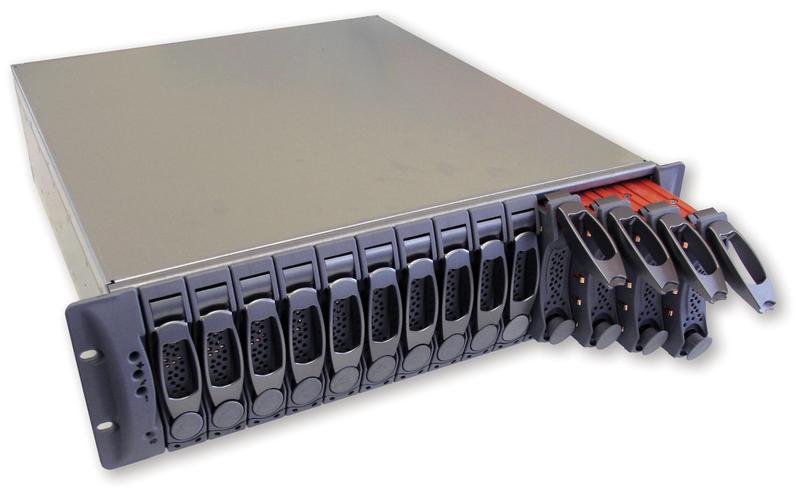
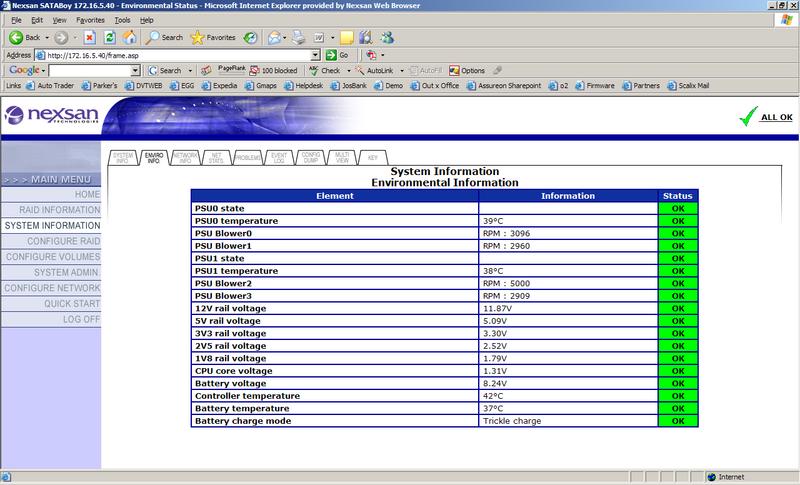
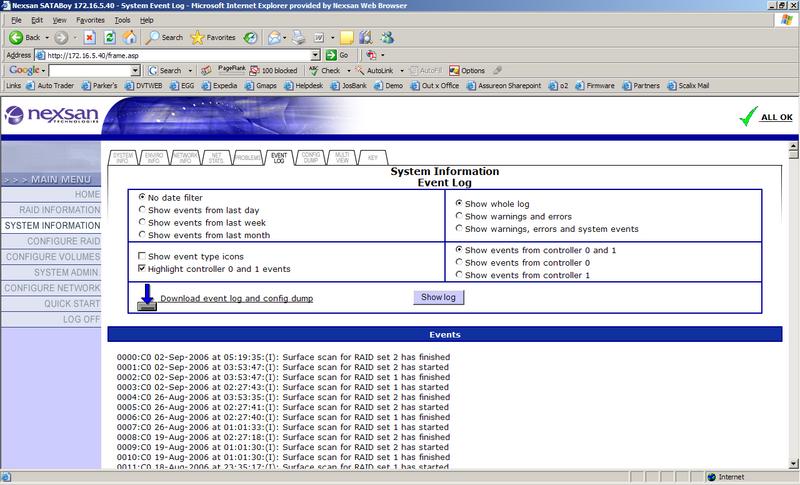
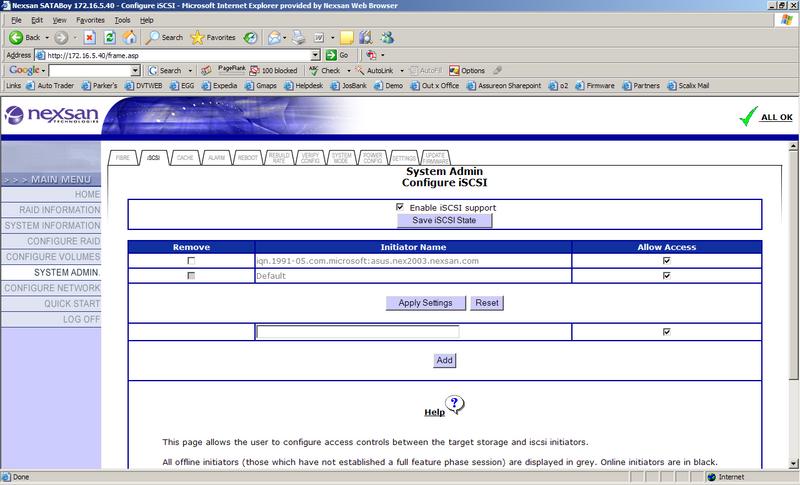
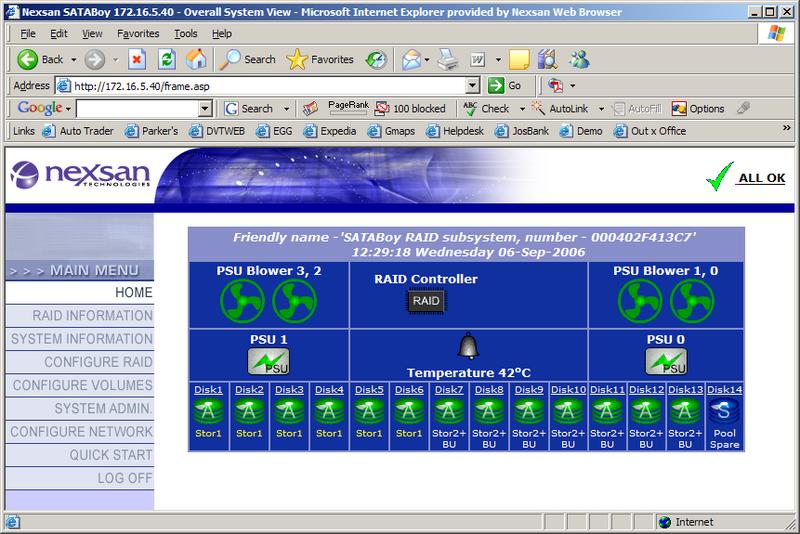
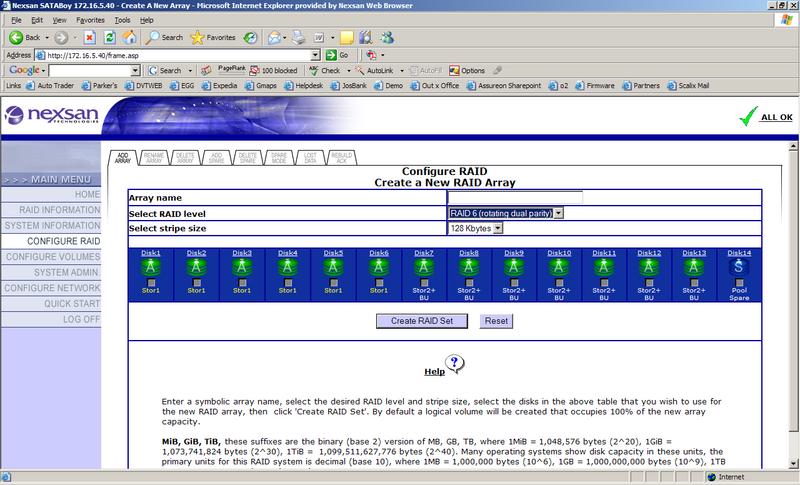
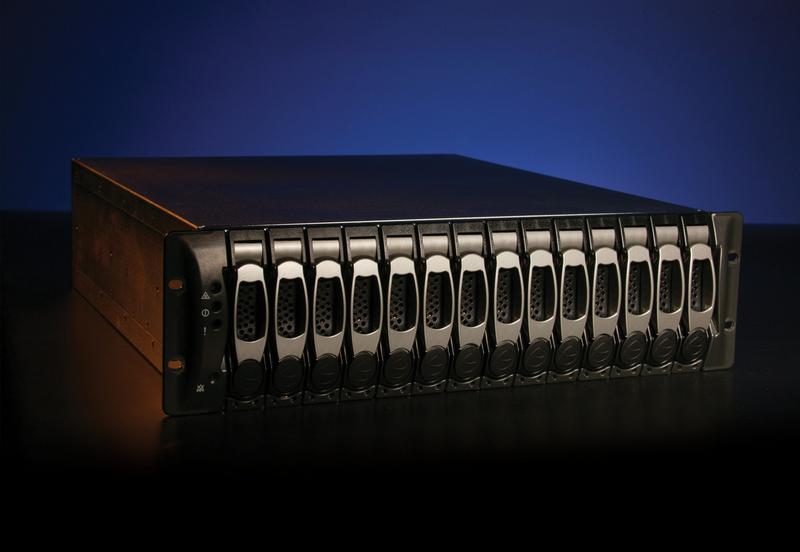

The Nexsan SATABoy is a 3U rack mount storage unit targeted at those who need a reliable but commodity priced storage array. Originally shipped as just a fibre channel solution, Nexsan has subsequently revamped it to accommodate iSCSI connectivity. With an entry level price of 11,250 it will appeal to the SME market who need to add enterprise level storage facilities.
The main chassis is a 3U box with 14 slots for hard disks. Nexsan ships 15 disks already mounted in their drive caddies. This speeds up installation and provides you with a spare in case of an emergency. This is important as you can only buy replacement disks from Nexsan. The disks in the SATABoy we received were Hitachi 500GB drives.
The chassis comes with two redundant power supplies and two controller cards. These cards support dual 2GB/s fibre ports and iSCSI. There is an Ethernet management port and a serial port for the initial setup and configuration.
Hardware installation was very easy. You attach the slides to the SATABoy and the rack then slide the SATABoy in. This is a heavy box and is a two man job as all the initial weight is in the back of the box. Once loaded into the rack, you interest the drives. Then slide easily into their slots and once installed you press a button to secure them.
At the back of the SATABoy, you connect power cords, fibre or Ethernet cables (depends on your choice of fibre channel or iSCSI) and a serial cable for configuration. Annoyingly, Nexsan does not to ship fibre cables with the SATABoy assuming that customers will have their own.
All of this took less than 15 minutes from unsealing the box to powering on. This was impressive.
Once you have powered on you attach the serial cable to a computer running a terminal emulator to do the initial setup. Alternatively, you can connect to the default IP address of the SATABoy web server and configure its IP addresses from there.
Sign up today and you will receive a free copy of our Future Focus 2025 report - the leading guidance on AI, cybersecurity and other IT challenges as per 700+ senior executives
Once you have set the network address you can then use a browser to connect to the web server inside the SATABoy. The first time you connect to the SATABoy there is no password set on the admin account not are you forced to set one. HP and other vendors using web servers for managing appliances and printers have recently experienced security issues with web servers and Nexsan needs to address this.
There is a Quickstart setup that creates two RAID arrays and two volumes in each array. If you don't want to use these or want a different configuration, you have to wait until these are built, then delete them and start again. This is frustrating but Nexsan insists it created the Quickstart routine based on customer requests.
In order to change this you need to go through several different options on the menu to delete the volumes and then the arrays. Now you can create your own array with a choice of RAID 0, 1, 4, 5 or 6. Nexsan has also allowed you a relatively wide choice of stripe size ranging from 16 to 128kb. This means that arrays can be adapted for the type of media they are to hold, something which is often overlooked by storage administrators.
Arrays are created immediately and each gets a default volume of 2TB. You need to delete this and then recreate for the size you want. When creating a volume you can allocate a reserved area for later expansion. You can map each volume to a LUN and there is support for 32 LUNs per SATABoy.
One thing that the SATABoy we reviewed didn't have was an installation for Microsoft SimpleSAN. This is something that Nexsan's competitors are all providing and it takes care of configuring and installing the iSCSI drivers on the server.
While the SATABoy is a rack mount device, heat and noise are still a consideration. Even when running complete rebuilds, the SATABoy did not generate a huge amount of heat and was less noisy than other arrays under test.
As the size of hard disks has increased, so has the size of the arrays that can be created and managed. This means that the rebuild time on a large array can be quite extensive. We created a single large RAID 5 array with a single volume and populated it with a mix of data and multimedia files. Having accessed and altered files randomly for several days, we then pulled one of the disks at random and inserted the spare disk shipped by Nexsan.
We were interested in how long it would take to rebuild such a large array. The answer was just over 6 hours despite the array not being in use during that time. If this had occurred during the working day then it would have had an impact on all users with the added risk of data running with no redundancy. As drives get larger, this time will only get worse. Of course, not everyone will create such a huge array but array management is something that is still not well understood by many administrators.
Overall data performance was good and when we connected both fibre ports we were able to get close to the 370MB/sec that Nexsan claims.
Nexsan have carefully positioned themselves against players such as Equallogic, EMC, IBM and Hitachi Data Systems. Despite this, the price of the SATABoy is more than 50 per cent cheaper than the competition. Normally such a price difference would indicate a lack of engineering but that isn't the case here.
This is an aggressively priced solution that should open up access to the SAN market for small and mid-size businesses and those who want to put a remote box into a branch office.
Verdict
The Nexsan SataBoy is a good, solid storage solution aimed at the small to mid-size market. With support for both Fibre Channel and iSCSI it will easily appeal to those looking for a mid capacity storage box.
Dual 2Gb Fibre ports per controller
Dual iSCSI ports
Fourteen SATA device channels
Data Transfer Rates Fibre: Up to 370MB/s sustained per controller, 44,500 IOPS
-
 ‘1 engineer, 1 month, 1 million lines of code’: Microsoft wants to replace C and C++ code with Rust by 2030 – but a senior engineer insists the company has no plans on using AI to rewrite Windows source code
‘1 engineer, 1 month, 1 million lines of code’: Microsoft wants to replace C and C++ code with Rust by 2030 – but a senior engineer insists the company has no plans on using AI to rewrite Windows source codeNews Windows won’t be rewritten in Rust using AI, according to a senior Microsoft engineer, but the company still has bold plans for embracing the popular programming language
By Ross Kelly Published
-
 Google drops $4.75bn on data center and energy firm Intersect
Google drops $4.75bn on data center and energy firm IntersectNews The investment marks the latest move from Google to boost its infrastructure sustainability credentials
By Nicole Kobie Published
-
 OpenAI says prompt injection attacks are a serious threat for AI browsers – and it’s a problem that’s ‘unlikely to ever be fully solved'
OpenAI says prompt injection attacks are a serious threat for AI browsers – and it’s a problem that’s ‘unlikely to ever be fully solved'News OpenAI details efforts to protect ChatGPT Atlas against prompt injection attacks
By Nicole Kobie Published